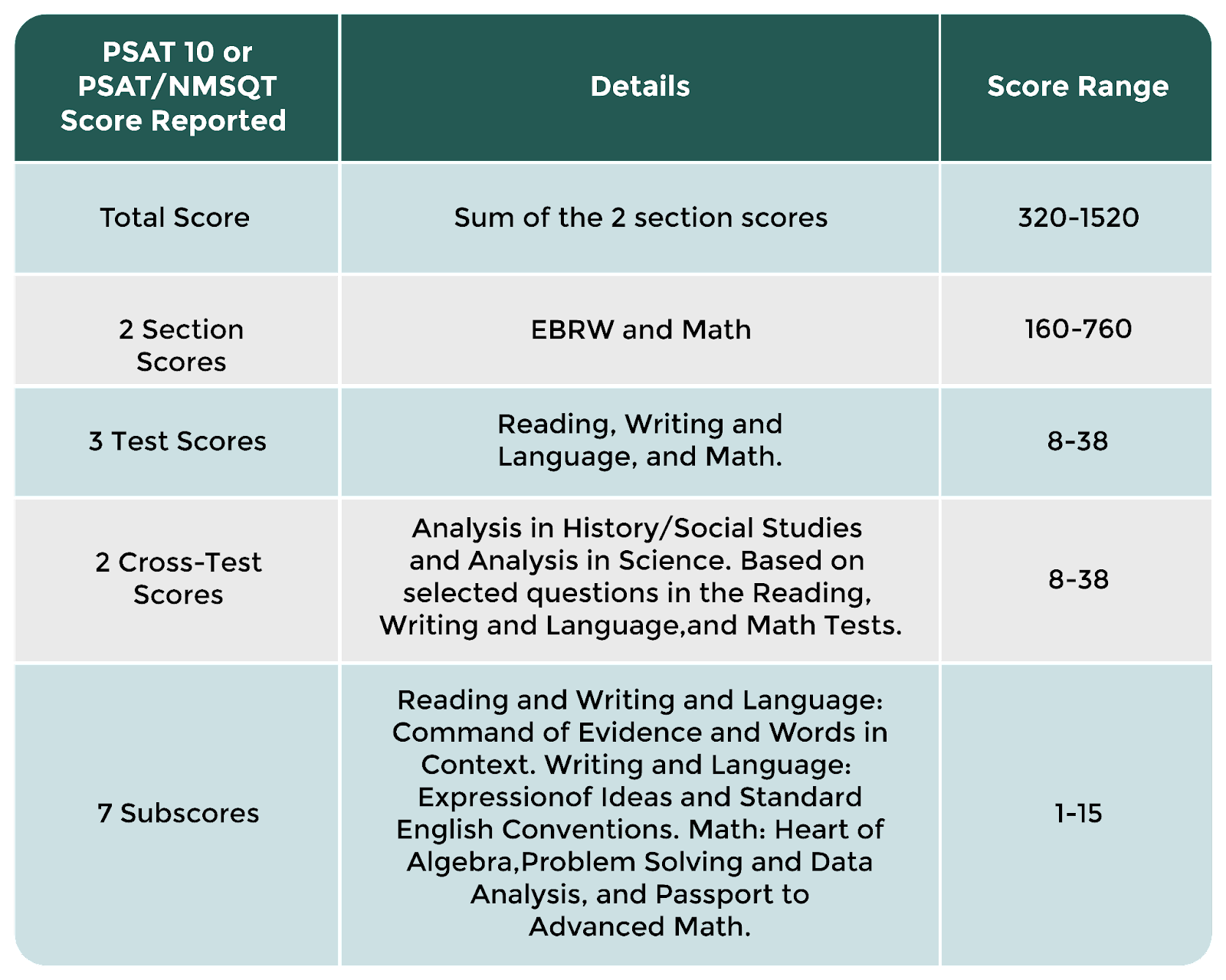The Preliminary SAT/National Merit Scholarship Qualifying Test, commonly known as the PSAT, is a standardized test that is often considered a precursor to the SAT. Administered by the College Board, the same organization that administers the SAT, the PSAT is typically taken by high school juniors in the United States. In this blog, we will delve into the details of what the PSAT test is, why it matters, what to expect, and how to prepare for it.
Origins and Purpose of the PSAT Test
The PSAT was first introduced in 1955 as a way to help students prepare for the SAT, which is a widely used standardized test for college admissions in the United States. Originally, the PSAT was only administered to students in a few select states, but over the years, it has become a nationally recognized test that is widely available to high school juniors across the country.
The primary purpose of the PSAT is to provide students with an opportunity to practice for the SAT and get a sense of what the test will be like. The PSAT is designed to assess a student's knowledge and skills in reading, writing, and math, and it is similar in format and content to the SAT. In addition to being a practice test, the PSAT also serves as the qualifying test for the National Merit Scholarship Program, a prestigious scholarship competition for high-achieving students.
Format and Content of the PSAT Test
The PSAT is a standardized test that is typically administered in October each year. It is a paper-and-pencil test that consists of three main sections: Reading, Writing and Language, and Math. The total testing time for the PSAT is 2 hours and 45 minutes, including breaks.
The Reading section of the PSAT consists of passages from various genres, such as fiction, nonfiction, and informational texts. Students are required to read the passages and answer multiple-choice questions that assess their comprehension, analysis, and reasoning skills.
The Writing and Language section of the PSAT focuses on a student's ability to revise and edit written passages to improve their clarity, coherence, and effectiveness. This section also includes multiple-choice questions that assess a student's knowledge of grammar, punctuation, and usage.
The Math section of the PSAT assesses a student's skills in algebra, geometry, and advanced math concepts. It includes both multiple-choice and grid-in questions, where students must provide their own answers.
In addition to the three main sections, the PSAT also includes an optional essay section, called the PSAT/NMSQT Essay, which is not included in the overall score. However, some colleges and universities may require or recommend students to take the essay section, so it is important to check the requirements of the schools to which you are applying.
Scoring and Interpretation of PSAT Test Results
The PSAT is scored on a scale of 320 to 1520, with a separate score for each of the three main sections (Reading, Writing and Language, and Math) ranging from 160 to 760. The scores are calculated by adding the number of correct answers and subtracting a penalty for incorrect answers, which means that there is no penalty for guessing. The optional essay section is scored separately on a scale of 6 to 24.
In addition to the scaled scores, students receive a percentile rank, which indicates the percentage of students who scored lower than them. For example, if a student has a percentile rank of 90, it means that they scored higher than 90% of students who took the PSAT. The percentile ranks are based on a national sample of students who took the PSAT in the same year.
One of the key benefits of the PSAT is that it provides students with detailed feedback on their performance through the PSAT Score Report. The score report includes a breakdown of the student's scores in each section, as well as information on their strengths and weaknesses, question difficulty levels, and subscores that reflect their performance in specific skill areas. This feedback can be invaluable in helping students identify areas for improvement and tailor their preparation for the SAT or other standardized tests.
Another significant aspect of the PSAT is its connection to the National Merit Scholarship Program. The PSAT/NMSQT, which stands for National Merit Scholarship Qualifying Test, is the version of the PSAT that serves as the initial screening for the National Merit Scholarship competition. The top performers on the PSAT/NMSQT, usually the top 1% of test-takers in each state, are eligible for recognition and potential scholarship opportunities.
The National Merit Scholarship Program is a highly prestigious and competitive scholarship program that awards scholarships to students based on their performance on the PSAT/NMSQT, as well as other criteria, such as their academic record, extracurricular activities, and leadership qualities. Being recognized as a National Merit Scholar can open doors to additional scholarship opportunities and may enhance a student's college application.

Preparing for the PSAT Test
Preparing for the PSAT test is essential to perform well and making the most of this opportunity for practice and potential scholarships. Here are some tips for effective PSAT preparation:
- Understand the test format and content: Familiarize yourself with the format and content of the PSAT by reviewing the official PSAT practice materials, including sample questions and test specifications. Understanding the types of questions, question formats, and time limits will help you feel more confident on test day.
- Review content areas: Review the content areas that are assessed on the PSAT, including reading comprehension, grammar and usage, and math concepts such as algebra and geometry. Brush up on any areas where you feel less confident and practice solving problems to reinforce your understanding.
- Practice time management: Time management is crucial on the PSAT, as it is a timed test. Practice pacing yourself during practice tests to ensure that you are able to complete all the questions within the allotted time. Learn to skip difficult questions and come back to them later if you have time.
- Take practice tests: Take official PSAT practice tests to familiarize yourself with the test format, content, and question types. Review your answers and learn from your mistakes to identify areas where you need improvement and adjust your study plan accordingly.
- Utilize available resources: Take advantage of the various resources available for PSAT preparation, such as study guides, online tutorials, and practice materials provided by the College Board. Consider enrolling in a test prep course or working with a tutor if you feel you need additional support.
- Develop test-taking strategies: Develop effective test-taking strategies, such as skimming passages before reading the questions, eliminating answer choices, and managing your time effectively. These strategies can help you approach the test with confidence and maximize your chances of success.
- Stay focused and manage stress: It's important to stay focused and manage stress during the PSAT preparation and on test day. Get enough sleep, eat well, and practice relaxation techniques to stay calm and focused during the test. Remember that the PSAT is a practice test, and your performance on this test does not define your worth as a student.
Conclusion
In conclusion, the PSAT test is an important standardized test that serves as a precursor to the SAT and provides valuable benefits such as practice, feedback, and eligibility for the National Merit Scholarship Program. Understanding the purpose, format, and content of the PSAT, as well as utilizing effective preparation strategies, can greatly enhance a student's chances of success on this exam.
In this comprehensive guide, we have covered everything you need to know about the PSAT test, including its significance, structure, scoring, and registration process. We have also provided expert tips and strategies to help you prepare effectively and perform your best on test day.
Whether you're a high school student aiming for a top score, a parent seeking guidance for your child, or an educator looking to support your students, we hope this blog has provided you with valuable insights into the PSAT test. By familiarizing yourself with the test content, practicing regularly, managing your time effectively, and utilizing the right strategies, you can confidently approach the PSAT and achieve your desired results.
Remember, the PSAT is not only an opportunity to gauge your readiness for the SAT, but it also provides a chance to qualify for the prestigious National Merit Scholarship Program. So, make the most out of this opportunity by preparing diligently, staying focused, and aiming for excellence.
We wish you the best of luck in your PSAT journey! If you have any further questions or need additional guidance, don't hesitate to seek help from teachers, counselors, or test prep resources. With the right mindset, preparation, and determination, you can conquer the PSAT and pave the way for a successful academic future. Start preparing today and take a step closer to achieving your academic goals!

Frequently Asked Questions (FAQs) Related to the PSAT Test:
What is the PSAT test?
The PSAT, or Preliminary SAT, is a standardized test administered by the College Board in the United States. It serves as a practice test for the SAT and also allows students to qualify for the National Merit Scholarship Program.
When is the PSAT test administered?
The PSAT is typically administered in October every year for high school sophomores and juniors. However, the test dates may vary by school or location.
How is the PSAT test structured?
The PSAT consists of two main sections: the Evidence-Based Reading and Writing (EBRW) section and the Math section. The EBRW section includes reading and writing questions, while the Math section covers both calculator and no-calculator questions.
How is the PSAT test scored?
The PSAT is scored on a scale of 320 to 1520, with separate scores for the EBRW section and the Math section. Additionally, students receive a score range for each section and a total score. The PSAT does not have a penalty for wrong answers, so it's important to attempt all questions.
What is the National Merit Scholarship Program?
The National Merit Scholarship Program is a prestigious scholarship competition in the United States that awards scholarships to high-scoring students on the PSAT. Students who achieve high scores on the PSAT in their junior year may qualify for recognition and potential scholarships through this program.
Is the PSAT test mandatory?
The PSAT is not mandatory, but many high schools encourage students to take it as a practice test for the SAT and as an opportunity to qualify for the National Merit Scholarship Program. However, participation in the PSAT may vary by school or district.





